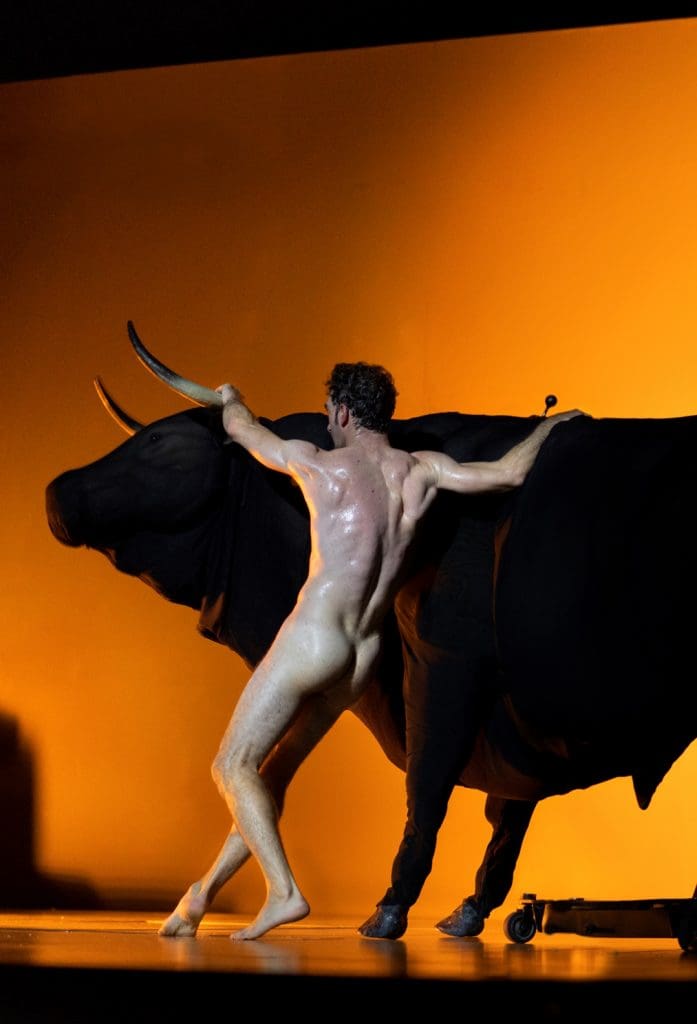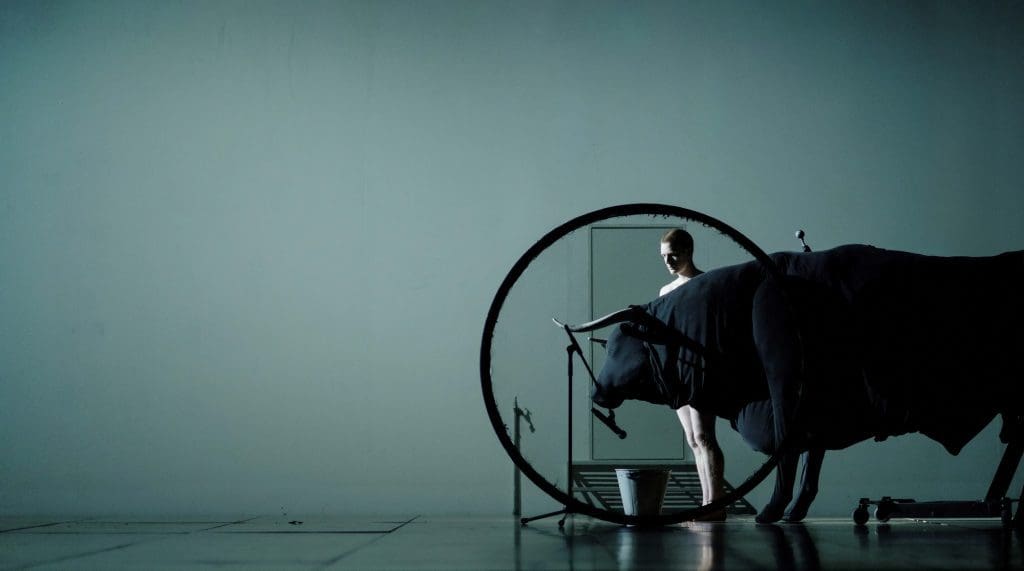ORA BRAFMAN
The revered Greek artist Dimitris Papaiouannou (1964) is known for creating impressive stage performances that are hard to define and impossible to ignore, since they are concocted from varied fields of cultural and artistic sources. Perhaps it is due to the artist's past when he first perused career as animator and painter –which is sustained – before he was attracted to the stage in his early twenties. His first short choreographic pieces which I saw in Athens decades ago, couldn't have predicted his future.
Later, in the early 90ies, he produced a fully ripe, outstanding rendition of 'Medea'. From its first move it was a mesmerizing revelation; an intimate work yet so powerfully captivating which took one's breath away with his original images that were both intense but restrained. It glittered like a rare gem and became an iconic work.
About thirty years had passed since then; Papaioannou is now a world renowned choreographer, his international reputation multiplied since he choreographed and directed the opening and closing for the 2004 Olympic Games in Athens and later the opening ceremony for the European Games in Baku. Those projects turned to be game changers.

Now, Papaioannou creations are playing on the larger arenas and are well supported. His works contains some elements that serve as anchors; among them we recognize a different perception of time which, to some extent, reminds the Japanese avant garde discipline – Buto,. Other influences on his works are attributed to innovators of new theater's practices – Robert Wilson and Pina Bausch. Added to that is his attraction to fringe performances and physical theater scenes. His trained eye for design came in handy when he designs his unique stages with a power of their own, or pick the right images and scene motives. His images are often connected to cultural Greek roots and some references to Christian imagery.
Even while he choreographed for the grandest stages, Papaioannou never resorted to display flashy, extravagant looks. He felt closer to the restrains of the Arte Povera movement (Italy) as he said in a press conference a few years ago. This is the source of the severe ambiance in his work, as we witnessed this week in TAPAC ; grayish stage, semi-dim lights, some figures dressed in black outfits unless they are naked. The evening's dominant image was a huge 3D black bull on wheels.
This great alchemist that he is, he hardly allows for the undercurrent of subdued passion to come out. This doesn't have much to do with the prevailing nudity in his stage works which remains neutral. Nudity is portrayed in a way to harness the naked male body, as asexual. Their performers' pale skin seems fragile in a striking contrast to the main simile of the huge black bull, the image of a virile animal.
The current work- Converse Orientation, has a lot in common with another work of his – Still Life, (1914) based on the myth of Sisyphus.

Both works contain various scenes based on constructing materials and end as deconstructed piles of debris, shifted from here to there by the dancers as if the materials are doomed to be scattered. Are the anonymous men only peons on a metaphorical political board game?
One pleasing moment among several, was meeting once more a Papaiouannou's version of illusion based riddles; in one case, you witness a moment when you realize that the woman which faces you has the body of a man. In a delay, you understand that the strange hybrid being, is composed by two people. Those variations are always entertaining.
Contrary to the expectations, the evening had included some scenes which seemed to lose their momentum, and others felt repetitious and slower than needed. Regrettably, a true catharsis doesn't come easily.
Ora Brafman